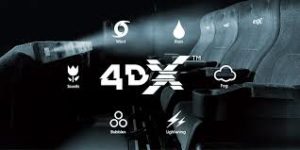Over the past ten years, the society has changed dramatically as a result of the significant evolution of technology. The most recent examples of this recent evolution are social networks or smartphones, more commonly known as new information and communication technologies. Although we are beginning to get used to these changes, new innovations are about to land in our daily lives, which could forever change the way we live. So, I’m going to talk about four technologies that will certainly change our society and our everyday life very soon in about the 2025s.
First we can talk about bionic implants or prostheses that are part of future technologies. Indeed, biotechnologies are advancing very quickly and will soon give the opportunity to really improve the characteristics of certain parts of the human body. Biotechnology can be defined as cybernetic elements used to replace diseased or amputated limbs or to improve the physical or mental characteristics of a human being. This would be much more than a replacement because the bionic technology could be controlled by the brain in the same way as a natural limb while being more resistant and increasing the physical capabilities of its wearer.
For example, scientists are trying to set up models of bionic arms and legs for people who have lost the capacity of these members. Already several models of bionic arms have the advantage of having the faculty or the action of grasping prey or other objects with the hand. But that’s not all; scientists are also trying to create a bionic eye or bionic contact lenses. This bionic eye could allow a blind person to recognize objects and shapes, or to display information superimposed on vision, like augmented reality.
Finally we could see the arrival of removable bionic enhancement technologies to be easily used by human beings wanting to improve their performance and having no severed or non-healthy limbs.
Secondly, we need to talk about 3D printers that are already revolutionizing the world. A 3D printer is a printer that prints three-dimensional objects from a variety of raw materials and by different processes. More precisely, it is the impression of very thin layers whose lamellae are superimposed to form an object in three dimensions. It is already possible to print plastic objects, metal and many other materials. Industry, medicine, food, jewellery, fashion, weapons, DIY, etc., are the sectors that use or are starting to use the 3D printer. It is therefore already possible for 3D printers to create food in a certain form or specific objects for DIY or create organs for the health sector.
Being already accessible to a large number of people, this technological innovation will still evolve strongly, will be democratized and will change many sectors and many industries. Finally, the 3D printer is the fact of creating in a new way with the least possible limits and revolutionizing traditional creative methods of all kinds.
Thirdly, the autonomous car will arrive soon and will completely change our daily life. Indeed, nowadays we can already find cars that are said to be autonomous but which still require our attention and therefore limit this autonomy. That’s why automakers have started pushing this concept further, for a few years, trying to set up the fully autonomous car. Helped and encouraged by some governments, more and more technology companies and automakers are testing autonomous vehicles to democratize this new technology to improve road safety. This revolution is becoming closer to reality: Google’s driverless cars have already travelled no less than 1,125,540 km without ever having a single accident.
So, even if nowadays some car models simply ask to put their hands on the steering wheel only for safety and make the trip alone, the appearance, in three / five years according to some, of this autonomous car will probably be the biggest revolution in the automotive industry since its appearance.
Finally, it is the arrival of trains capable of traveling at a very high speed that could change our daily lives and could be a strong alternative to means of transport such as the plane or the car. That’s what Hyperloop is trying to promise for the next five years more or less.
Hyperloop is the concept of a shuttle placed in a depressurized tube, keeping itself in the air and moving thanks to a magnetic levitation system. According to projections, the Hyperloop could reach 1200 km / hour thanks to the system reducing to the maximum the friction. In total, the Hyperloop One XP-1, the name of the prototype, has travelled a little less than 450 meters, said the group, which said it has successfully tested all components of the system. Despite much criticism of its feasibility, at least four companies are already competing to be the first to market this supersonic train that would forever change the train and transportation industry and that would give tremendous competition to the industry plane.
We can therefore see in this article, that in the near future, our daily life will be totally overwhelmed by different new technologies. This will be done through the improvement of our transportation, which could happen faster than we think despite the fact that we can still raise security issues. In addition these changes will also be made through the improvement of our health which could also raise ethical questions concerning healthy bodies wanting to increase their performances thanks to biotechnologies. Finally this will be done through the improvement of product creation, in the broad sense, which is already experiencing a change thanks to the 3D printer. However, this new technology is only at the beginning of its appearance and still faces limits in terms of its acquisition, the materials, and the size of the products created or forms that can be printed. It will take at least five / seven years before experiencing all these new technologies.
Sources:
http://www.abc.net.au/news/2017-02-16/bionic-eyes-arms-and-spines-no-longer-science-fiction/8266238
https://www.3dhubs.com/what-is-3d-printing#basics
https://hypebeast.com/2017/8/hyperloop-one-xp-1-passenger-pod-192-mph-test







